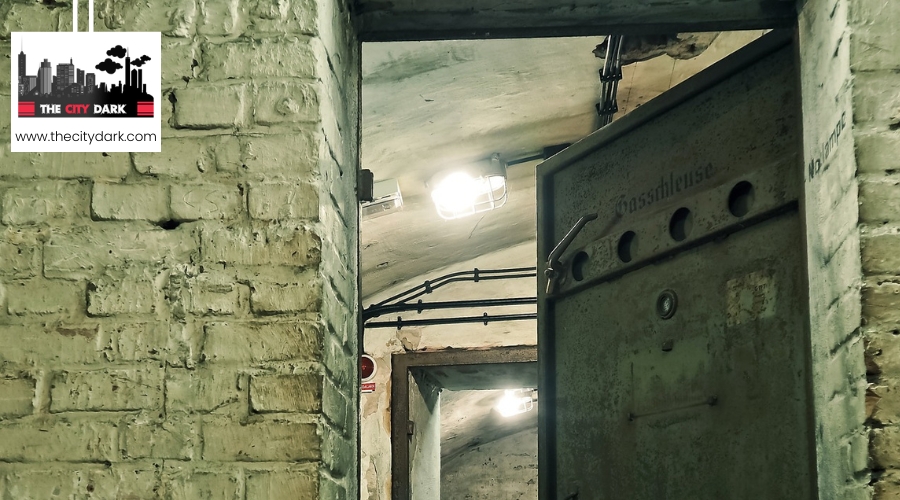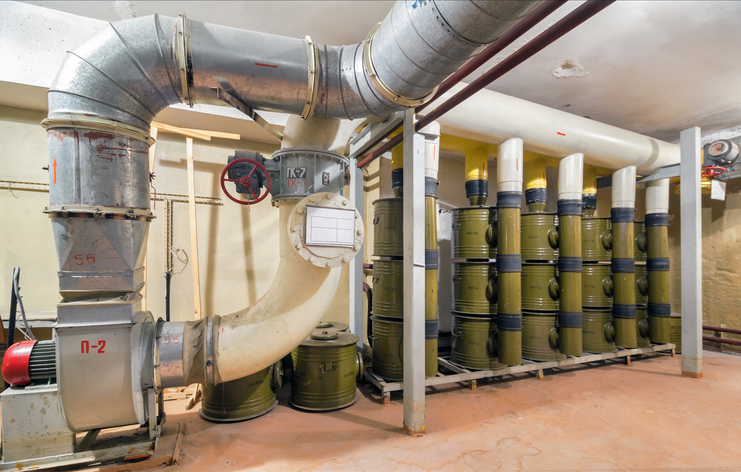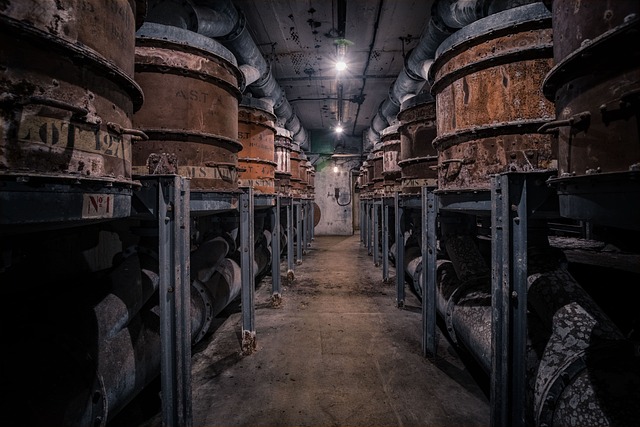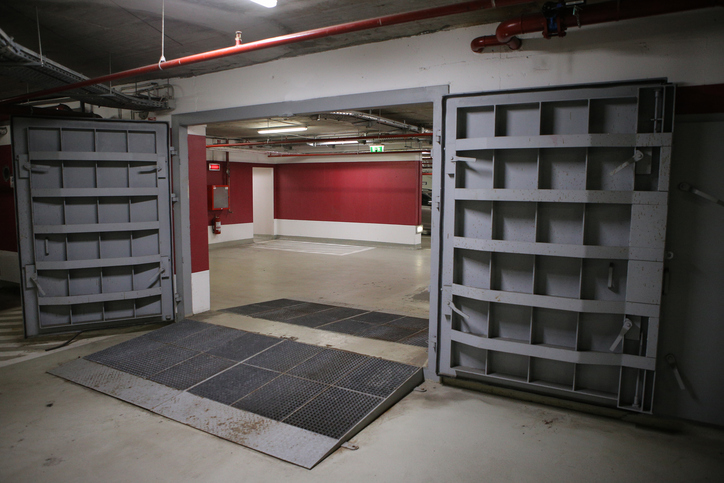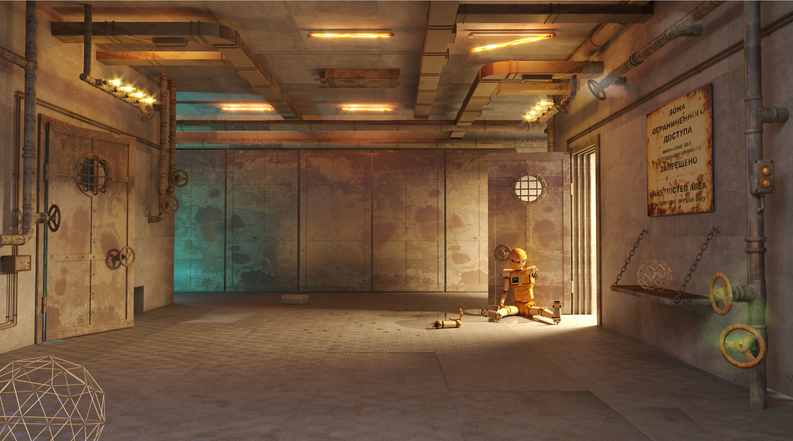Have you ever wondered how long you could survive in a sealed bunker? Imagine yourself tucked away from the world, shielded by layers of concrete and steel, with the clock ticking on your supplies and sanity. You’d need to consider air quality, water and food supply, waste management, and not to mention, the psychological effects of prolonged isolation.
While the idea might seem simple at first glance, the reality is that surviving in such an environment demands meticulous planning and a robust understanding of the challenges you’d face. As we explore the intricacies of living indefinitely in a bunker, you’ll discover that the answer isn’t as straightforward as you might think.
There are innovative solutions and surprising hurdles that could dramatically influence your survival timeline. Stick around to uncover what it really takes to sustain life in the confines of a sealed bunker, where every decision you make could be crucial to outlasting whatever calamity you’re hiding from.
Key Takeaways
- Proper air quality and ventilation are crucial for ensuring a safe living environment in a sealed bunker.
- Calculating daily rations and having a sustainable food and water supply is essential for sustaining life in a sealed bunker.
- Effective waste management solutions, including designated storage containers and sanitary facilities, are necessary for maintaining cleanliness and preventing the spread of diseases.
- Living in a sealed bunker can have significant psychological effects, and it is important to develop coping mechanisms, establish routines, engage in physical activities, and connect with others to alleviate psychological strain.
Air Quality and Ventilation
Ensuring proper air quality and ventilation in a sealed bunker is crucial for maintaining a safe and comfortable living environment. Without a reliable ventilation system, you’re at risk of running low on oxygen, making every breath a struggle. Imagine being in a confined space where the air feels thick and stale; that’s what happens when there’s insufficient airflow.
It’s not just about bringing in fresh air; it’s also about preventing the build-up of harmful gases that can sneak up on you, turning your safe haven into a hazard zone.
You’ve also got to think about temperature regulation. It’s not just a matter of comfort but safety too. Without proper ventilation, heat can build up, making your bunker feel more like a sauna than a shelter. That’s where air filtration comes into play. A top-notch NBC (Nuclear, Biological, and Chemical) filtration system ensures that the air you breathe is free from contaminants, turning a potentially toxic atmosphere into a breathable one.
It’s all about maintaining safety, health, and livability. Remember, surviving in a sealed bunker is more than just having walls and a door; it’s ensuring the air you breathe keeps you alive and well.
Food and Water Supply
Ensuring you have enough to eat and drink in a sealed bunker means you’ll need to calculate your daily rations carefully. You must know how to purify water, as it’s vital for both drinking and hygiene. These steps are key to maintaining your health and well-being in such an environment.
Calculating Daily Rations
To calculate your daily rations for a sustained stay in a bunker, start by determining the amount of non-perishable food and water you’ll need based on the number of occupants and the anticipated duration of your stay. You’ll want to ensure there’s enough drinking water for each person and a steady supply of canned foods, dried fruits, vegetables, and sustainable snacks. Planning for a renewable water source or a water filtration system is crucial. Here’s a simple guide to get you started:
| Item | Daily Quantity per Person | Total for 4 People |
|---|---|---|
| Drinking Water (liters) | 3 | 12 |
| Canned Foods | 4 cans | 16 cans |
| Dried Fruits (grams) | 100 | 400 |
| Vegetables (grams) | 200 | 800 |
| Sustainable Snacks | 3 | 12 |
Water Purification Methods
You’ll need to consider several effective water purification methods to maintain a safe drinking supply in your bunker. Ensuring access to clean water is crucial for survival, and incorporating a reliable water filtration system or other filtration systems can make a significant difference. Here are the methods you should know:
Boiling
- Kills most pathogens
Filtration
- Use a water filter with a small pore size
- *Traps harmful bacteria and parasites*
Chemical Treatment
- Add chlorine, iodine, or tablets
Distillation
- Removes contaminants by condensing boiled water vapor
UV Treatment
- Exposes water to ultraviolet light
Each method has its unique benefits and limitations. Combining them can enhance your bunker’s water safety, making sure you’re prepared for any situation.
Waste Management Solutions
Effective waste management in a sealed bunker requires designated storage containers and sanitary facilities to maintain cleanliness and prevent disease. When you’re embracing underground living, the importance of handling waste can’t be overstated. Your bunker’s longevity and your health heavily depend on robust waste management solutions.
First off, you’ll need to segregate your waste. Separate containers for recyclables, organic waste, and non-recyclables ensure you’re not only keeping your living space clean but also ready for any potential waste processing or recycling opportunities. Sanitary facilities are crucial for personal hygiene and waste disposal. This includes toilets that are connected to a safe disposal system, possibly incorporating composting solutions to minimize waste.
Furthermore, a renewable water supply or a high-grade water filtration system is vital. It ensures that water used for cleaning and hygiene doesn’t become a source of contamination. The implementation of such a system supports your bunker’s sanitation efforts, preventing the spread of diseases.
In essence, living under the surface demands a proactive approach to waste management. By setting up efficient systems for waste segregation, disposal, and water purification, you’re not just surviving; you’re ensuring a healthy underground habitat for the long haul.
Psychological Effects
While managing waste is crucial for maintaining physical health in a bunker, addressing the psychological effects of long-term underground living is equally important for your mental well-being. Living in an underground shelter, you’re likely to face significant mental health challenges, including feelings of anxiety, depression, and mood swings, primarily due to isolation and confinement. The lack of natural sunlight and limited social interactions play a substantial role in impacting your mental state over time.
Psychological effects in a bunker:
- Isolation and Confinement: These can deeply affect your emotional state, leading to a range of psychological challenges.
- Anxiety
- Depression
- Mood swings
- Lack of Natural Sunlight and Limited Social Interaction: Vital for mental well-being, their absence can exacerbate feelings of loneliness and despair.
- Stress and Tension: Prolonged confinement increases stress levels, affecting relationships and personal health within the shelter.
Developing coping mechanisms, such as establishing routines, engaging in physical activities, and finding ways to connect with others, even digitally, are essential steps to alleviate psychological strain. Remember, adapting to the restricted environment of a bunker takes time, and it’s vital to give yourself space to adjust and find balance.
Space and Comfort Levels
When you’re living in a sealed bunker, how space is allocated and designed significantly impacts your comfort and psychological well-being. It’s crucial that the design includes optimal space allocation, essentials for comfort, and considers your psychological need for space.
These elements together ensure that your underground living experience isn’t just bearable, but actually livable for extended periods.
Optimal Space Allocation
To maximize comfort and well-being in a sealed bunker, it’s essential to allocate space wisely, balancing between supplies storage and areas for relaxation and recreation.
Your underground complex isn’t just a shelter; it’s your new home for an unforeseen period. Think strategically about:
Supplies Storage
- Ensure there’s enough room for your water supply and food.
- Consider space-saving solutions like vertical shelves.
Recreation Areas
- Dedicate space for physical exercise; it’s vital for health.
- Include areas for hobbies to maintain mental well-being.
Personal Relaxation Spaces
- Create private nooks for downtime, essential for psychological health.
- Use room dividers to separate living areas, enhancing the sense of space.
Efficient use of space can significantly impact your comfort and morale, making confinement more bearable.
Comfort Design Essentials
Having considered the importance of space allocation in your bunker, it’s crucial to focus on comfort design essentials that elevate both space utilization and comfort levels. In your underground fallout shelter, every element from air quality to lighting plays a pivotal role in ensuring you’re not just surviving, but thriving.
| Essential | Purpose |
|---|---|
| Ventilation System | Maintains air quality, crucial for comfort in a sealed environment. |
| Lighting System | Replicates natural daylight, regulating sleep patterns and well-being. |
| Comfort Supplies | Includes clothing and bedding to keep optimal body temperature. |
Psychological Space Needs
Understanding your psychological space needs is crucial for maintaining mental well-being in the confined quarters of a bunker. To ensure your mental health doesn’t suffer, you’ll need to understand how to balance communal and private areas effectively. This balance is key to preventing feelings of claustrophobia and anxiety that can arise from prolonged periods in such an environment.
Here’s what you should consider:
Design and Layout:
- Ensure the bunker allows for personal spaces where individuals can retreat.
- Consider the use of lighting and colors that create a feeling of openness.
- *Strategically place communal areas to foster social interaction without overwhelming personal space.*
Creating a sense of comfort and personal space is essential in mitigating the psychological impact of living in a sealed bunker.
Emergency Preparedness
In preparing for emergencies, it’s crucial you stock up on essentials like non-perishable foods and medications. You’re not just thinking about survival; you’re ensuring you can maintain a semblance of normal life, even in a sealed bunker. Emergency preparedness is about more than just having enough to eat; it’s about sustaining life as comfortably as possible under the circumstances.
| Essentials | Purpose |
|---|---|
| Non-perishable foods | To provide sustenance without frequent resupply needs. |
| Medications | To maintain health and manage pre-existing conditions. |
| Portable radios | For receiving updates and staying connected with the world. |
| Waste disposal | To ensure hygiene and prevent diseases. |
| Ventilation systems | To maintain air quality and comfortable living conditions. |
Long-Term Sustainability
To ensure long-term sustainability in a bunker, you’ll need reliable ventilation systems for adequate oxygen and effective water storage and purification methods. It’s not just about surviving the initial days; it’s about thriving for an extended period. Considering several factors is crucial for success:
Oxygen & Water:
- Vital for life.
- Ventilation: Ensures a fresh oxygen supply.
- Water storage: Must be ample and secure.
- Purification: Essential for maintaining water safety over time.
Food & Power:
- Non-perishable foods: Stock up on items that have a long shelf life.
- Renewable water source: Considers methods like rainwater harvesting.
- Electricity: Plan for solar panels or wind turbines and have a stockpile of batteries.
Shelter & Supplies:
- *Construction*: Your bunker should be robust to withstand time and elements.
- *Clothing and bedding*: Ensure you have suitable attire and bedding for long-term stays.
- *Reserves*: Always have backups for critical systems and supplies.
These considerations will guide you in creating a bunker that’s not just a temporary hideout, but a long-term, sustainable living space.
Conclusion
In conclusion, surviving in a sealed bunker depends on several key factors:
- Maintaining air quality: Ensuring a constant supply of clean air is essential for survival. This may involve installing air filtration systems or even growing plants to produce oxygen.
- Securing a reliable food and water supply: Stockpiling non-perishable food items and storing clean water are crucial for long-term survival. Creating a sustainable food source, such as growing your own vegetables or raising animals, can also be beneficial.
- Implementing effective waste management solutions: Living in a confined space requires careful management of waste. This may involve setting up composting systems or using waste disposal methods that minimize odor and health risks.
Additionally, there are several other considerations to keep in mind:
- Psychological effects of prolonged isolation: Being isolated for an extended period can take a toll on mental health. It’s important to have strategies in place to combat boredom, loneliness, and anxiety. This may include activities, entertainment, and maintaining communication with the outside world.
- Enough space for comfort: Living in a confined space for an extended period can become claustrophobic. Providing enough space for comfortable living, including sleeping areas, recreation areas, and storage, can help maintain morale and overall well-being.
- Preparation for emergencies: Being prepared for unforeseen circumstances is crucial. This includes having a well-stocked first aid kit, emergency communication devices, and a plan for potential emergencies such as power outages or equipment failures.
Ultimately, long-term sustainability in a sealed bunker hinges on careful planning and the ability to adapt to changing circumstances. With the right preparations and mindset, it is possible to extend your stay and create a fulfilling life even in a confined space.

